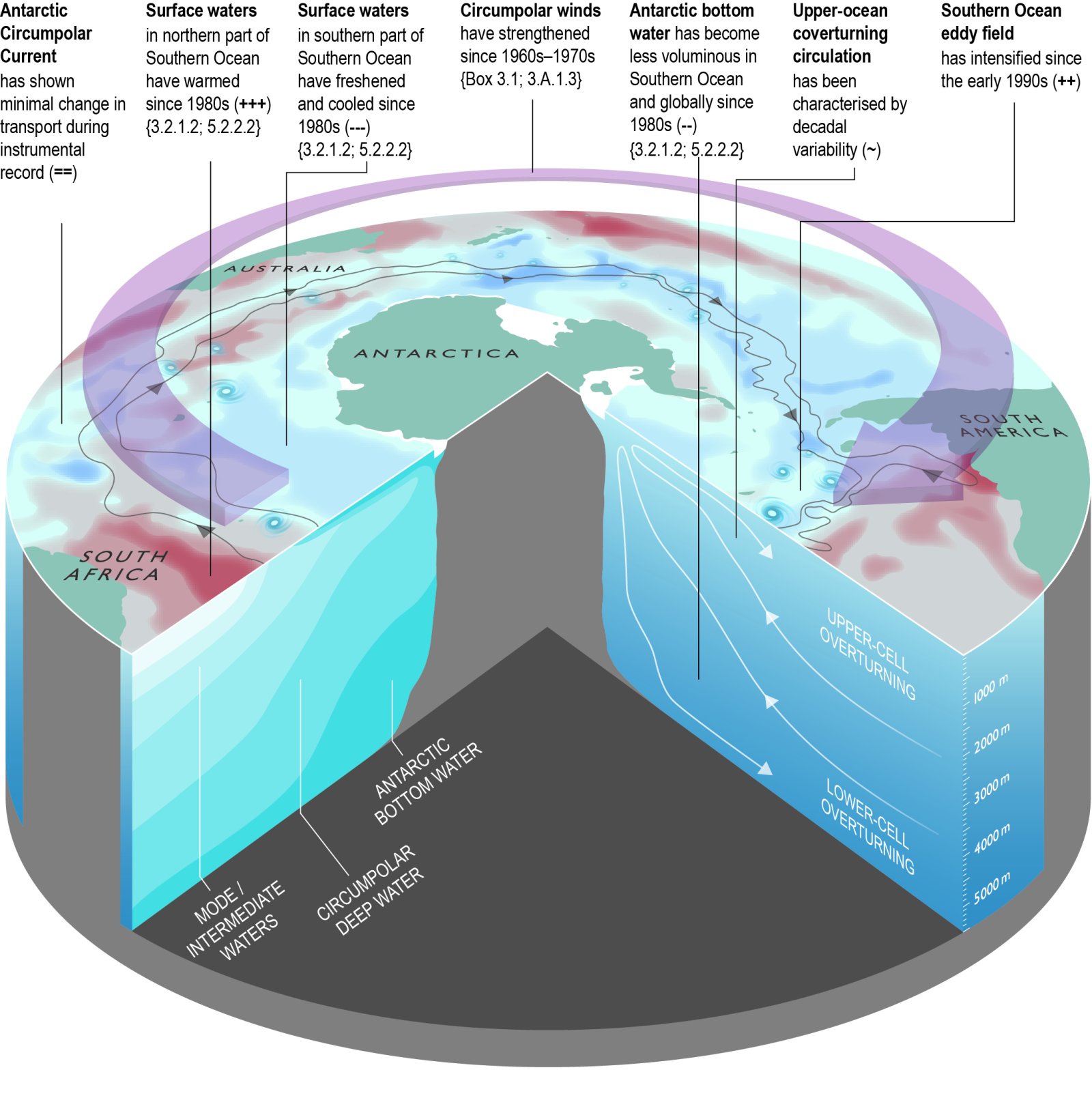The geologic history of the position of the Southern Ocean subtropical front
.... and what that has to do with the shape of the Antarctic ice sheet
The Southern Ocean and surrounding continents faced several dramatic weather extremes in the past few years, all of which are thought to be linked to climate change. Australia has seen both the most extreme floods and droughts, and the Antarctic sea ice is at an extreme all-time low. The ocean plays a huge role in these anomalies, as it distributes heat and moisture in these areas. Specific for Australia, the subtropical front separates warm waters in the north from cold waters in the South. It is the steepest part of the equator-to-pole temperature gradient, and thus a strong factor in the heat distribution by the ocean over the globe. Shifts in the position of this front determine for a great deal weather patterns in southeast Australia, but also in South Africa and South America. In a new paper, which was recently published in Nature Communications, a multidisciplinary team of authors from Utrecht University (Earth Sciences and Institute for Marine and Atmospheric research Utrecht) and NIOZ Royal Netherlands Institute of Sea Research have reconstructed the position of the subtropical front back in time, for the past 23 million years, thereby contributing significantly to our understanding of how ice-ocean-climate interactions operate over longer time scales.
Frontal migrations tracked by plankton
The authors used a diverse set of tools: fossil plankton, their isotopic composition and computer models. They analyzed plankton fossils retrieved from a sediment core drilled by the Ocean Drilling Program offshore Tasmania, which is located close to the subtropical front in the Southern Ocean. From this, a northward migration of the subtropical front was reconstructed, from near Antarctica in the Early Miocene (~20 million years ago) to its modern position south of Tasmania. This had profound effects on climate in southern Australia, and the rest of the Southern Ocean: a strong cooling of surface ocean, and through that, a cooling and aridification of the southwest Australian landmass.
But what forced this northward movement of the subtropical front?
The cause of this northward shift of the subtropical front was the Antarctic ice sheet. It was long thought that the Neogene (23–2.5 million years ago) was a time of strong gradual land ice growth on Antarctica. However, new evidence from a relatively novel technique, clumped isotopes, has put this into question. Using this new technique, the authors present robust evidence that the Antarctic ice sheet did not increase much in volume in this time. This is surprising, since a lot of evidence exists that the ice sheet advanced seaward and made connections to the adjacent ocean. For long it was thought that this seaward advance was evidence of an ice volume increase, but this new study now suggests that this wasn’t the case. What can cause an ice sheet to advance seaward without growing in volume? Numerical model simulations in this paper showed that precipitation changes on the ice sheet could cause a seaward advance of the ice sheet without growing in volume. This seaward expansion caused a lot of cooling of surface waters, with expansion of sea ice. It was the sea ice that forced the subtropical front northwards, towards Australia.
Strong changes
Therefore, the paper concludes that in the Neogene, changes in the ice sheet forced strong changes in the ocean conditions in the Southern Ocean, including the expansion of sea ice, cooling of the Southern Ocean, and northwards migration of the ocean fronts. This ocean change determined to a large extent the weather conditions on the Southern Hemisphere. This is interesting as today, worries are that the ocean warming will cause a retreat or even a collapse of parts of the Antarctic ice sheet, with major consequences for sea level rise. The study presented here shows that on long time scales, it was actually the ice sheet that cooled the ocean, instead of the ocean temperature affecting the ice sheet.
Why is this important?
The effects of anthropogenic climate change for the ice sheet, the polar ecosystem, sea level rise and for weather extremes are still unacceptably uncertain, due to the complexity of the interactions between ice sheets, oceans and climate. This study adds the context of the geologic past into the collective research by the community. Several time intervals in the past 23 million years had atmospheric CO2 concentrations as high as today and as the future. Studying these time intervals adds collective understanding of how ice-ocean-climate interactions operate over longer time scales, and this greatly helps to improve the accuracy of projections of future climate and sea level change.
Publication
Suning Hou, Lennert B. Stap, Ryan Paul, Mei Nelissen, Frida S. Hoem, Martin Ziegler, Appy Sluijs, Francesca Sangiorgi and Peter K. Bijl, ‘Reconciling Southern Ocean fronts equatorward migration with minor Antarctic ice volume change during Miocene cooling’, Nature Communications, 9th November 2023, https://doi.org/10.1038/s41467-023-43106-4.


